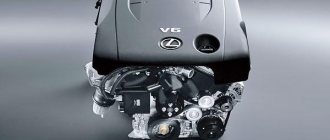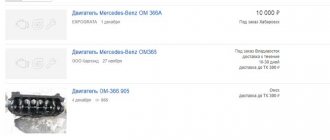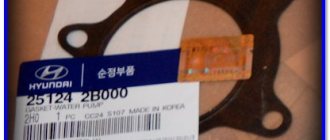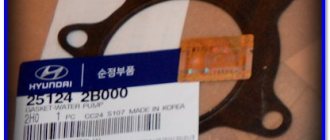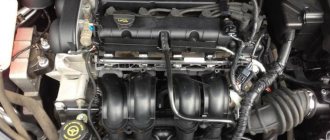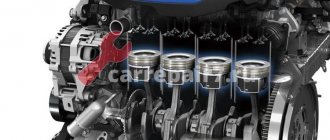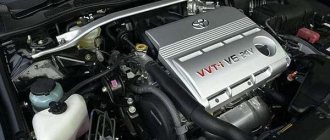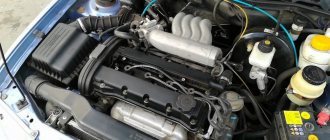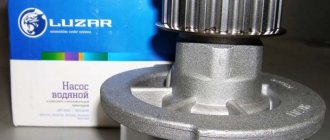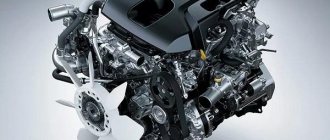Negative dynamics of sales of segment A cars in Russia have been observed since 2011. Russian car enthusiasts prefer to drive a sedan or a city, compact crossover. For this very reason, many famous brands are entering the Russian automobile market with a line of cars that is dominated by crossovers and SUVs, but virtually no small cars. The South Korean automobile company was not afraid of the downward sales trend and began official sales of the third generation Kia Picanto in the Russian Federation. The history of this machine goes back 15 years. The first generation of the model rolled off the assembly line in 2004. The miniature car, designed by German specialists, remained at the top of popularity in its niche for more than six years. In 2011, during the international automobile exhibition in Geneva, the Koreans presented the second generation of Picanto.
It was a completely new car, developed with the participation of famous designer Peter Schreyer. The model turned out to be successful in every sense, which was confirmed by the hail of awards that literally fell on the Kia Picanto. In 2012, the miniature “Korean” received the main award in the world for its stylish, bright design - the Red Dot Award. In South Korea, this car won the title of “Car of the Year” three times. And finally, the third generation of the car, which debuted on the scene in 2014. The Kia Picanto has become significantly more spacious in the cabin, and the appearance of the car has also changed. The body shapes have been rounded, the headlights have become more modern and elegant. If everything is more or less clear with the exterior of the car, then with the engines everything is a little different. Potential buyers are interested in what the service life of the Kia Picanto engine is. Next, we will cover in detail the maximum service life of the power unit and the most often encountered problems during operation.
Kia Picanto engine range
The first generation of Picanto was designed on the basis of another Korean car - the Hyundai Getz. By the way, in South Korea the model is called differently – Morning. The hatchback was delivered in Russia with two different power units of 1.0 and 1.1 liters in a front-wheel drive version and with an automatic transmission. The first engine generates 62 horsepower at its peak, and the second – 65 horsepower. After restyling in 2007, the range of power units of the model did not change, only the appearance was slightly transformed. But with the advent of the next version of the car, new engines became available. Although their displacements did not change, since they were still 1.0 and 1.1 liter engines, the design of the engines was improved, they became technologically advanced and modern. In general, the Kia Picanto engine lineup looks like this:
- 1.0 liter G4HE engine with a stated power of 62 horsepower and torque of 86 Nm at 2500 rpm;
- 1.1 liter G4HG engine with 65 horsepower and torque of 97 Nm at 2800 rpm;
- 1.0 liter G3LA engine with a maximum declared power of 69 horsepower, torque of 95 Nm when reaching 3700 rpm;
- 1.2 liter G4LA engine, producing 86 horsepower and generating torque of 122 Nm at 4000 rpm;
In the third generation, engines migrated from the previous generation of cars. However, they lost somewhat in terms of power: the manufacturer was forced to slightly “strangle” the engines due to stricter exhaust gas toxicity standards. The power of the engines dropped by only a few units; in terms of design, features, advantages and disadvantages, these became the already well-known G3LA/G4LA engines. The main type of transmission is a four-speed automatic transmission, but a manual is available for the version with the 1.0 liter G3LA engine. Many car owners are put off by the slow and outdated four-speed automatic. But, if you rely on the main purpose of the car - daily city use - the need for fifth gear virtually disappears.
Kia Picanto engine - how much oil
First generation SA, 2003-2011
The first generation Picanto is based on a shortened platform from the Hyundai Getz hatchback. The main body for the Picanto was a five-door hatchback, but a two-seater van was also made specifically for the Korean market. With a body length of 3.5 meters, the Picanto turned out to be not only the most compact, but also the most affordable Kia model. The car was sold with 1.0 and 1.1 liter gasoline engines (61-65 hp). Exclusively for Europe, they also offered a version with a 75-horsepower 1.1-liter diesel engine, as well as a modification running on liquefied propane. Gearboxes – manual transmission-5 or automatic transmission-4.
Also read: Motor oil for Toyota Probox engine
Gasoline engines 2004-2011
- 1.0 62 l. With. (G4HE), oil volume - 3 liters, tolerance and viscosity: API-SJ, SH, SL; SAE 5W-40, 5W-30, 10W-30, 10W-40, 0W-40, 0W-30
- 1.1 65 l. With. (G4HG), oil volume - 3 liters, tolerance and viscosity: API-SJ, SH, SL; SAE 5W-40, 5W-30, 10W-30, 10W-40, 0W-40, 0W-30
Second generation TA, 2011-2017
The body of the second Picanto featured features of Kia's new signature design, like the Magentis and Cerato models of that time. In particular, this can be seen in the characteristic “evil” radiator grille. The car has increased slightly in comparison with its predecessor, and also received a more affordable three-door modification. The engine range consisted of 1.0 and 1.2 liter petrol engines (66-85 hp). It was decided to abandon the diesel engine, but the liquefied gas version was still supplied to some countries. In Korea, the car was sold under the name Morning. The top version with a 106 hp liter turbo engine was also produced here. With.
Gasoline engines 2011-2017
- 1.0 66 l. With. (G3LA), oil volume - 3.2 liters, tolerance and viscosity: API-SM-SN; SAE 5W-40, 5W-30, 10W-30, 10W-40, 0W-40, 0W-30
- 1.0 69 l. With. (G3LA), oil volume - 3.2 liters, tolerance and viscosity: API-SM-SN; SAE 5W-40, 5W-30, 10W-30, 10W-40, 0W-40, 0W-30
- 1.2 85 l. With. (G4LA), oil volume - 3.6 liters, tolerance and viscosity: API-SM-SN; SAE 5W-40, 5W-30, 10W-30, 10W-40, 0W-40, 0W-30
Third generation JA, since 2017
Picanto III is an upgraded version of its predecessor. This is noticeable by the similar body shape with minor modifications in the design of the front and rear, and in profile both models are almost identical. Key changes include a widened grille and slanted headlights. In general, the car retained the dimensions of its predecessor, but the body height decreased by 5 mm (1485 versus 1490 mm). Petrol engines of 1.0 and 1.2 liters. Transmissions: 5-speed manual transmission and 4-speed automatic. The Picanto is based on the platform from the Hyundai i10 model.
Also read: Engine oil for Volkswagen Transporter engine
Gasoline engines from 2017
- 1.0 67 l. With. (G3LA), oil volume - 3.2 liters, tolerance and viscosity: API-SN; SAE 5W-40, 5W-30, 10W-30, 10W-40, 0W-40, 0W-30
- 1.2 84 l. With. (G4LA), oil volume - 3.6 liters, tolerance and viscosity: API-SN; SAE 5W-40, 5W-30, 10W-30, 10W-40, 0W-40, 0W-30
Engine life G4HE 1.0
Cooperation between two South Korean manufacturers in the development and assembly of power units has been going on for many years. Many Hyundai and Kia cars have the same engines. This trend has not spared small cars. As for the small-volume G4HE engine, it was installed only on the Picanto. The engine is made using old production technology - a cast-iron cylinder block and an aluminum head. The installation is resistant to loads and critical increases in the operating temperature of the system, but the condition of the coolant should still be constantly monitored. According to the layout, the G4HE is an in-line 12-valve “four” with three valves for each cylinder. The SOHC gas distribution system consists of one shaft and is located at the top. In general, this engine cannot surprise the average car enthusiast structurally. We are dealing with a conventional, or, as is commonly called, “classic” Korean-made engine.
From the layout and design of the engine, it is not difficult to guess all the main advantages of the G4HE - high reliability, relative simplicity, strength of the cylinder block, maintainability. But this also leads to some annoying disadvantages of the engine - high noise, low power and sometimes excessive “gluttony” of engine oil and gasoline. This engine does not have hydraulic compensators, which has a positive effect on the cost of repairs and maintenance of the G4HE. Thermal clearances should be adjusted every 40-50 thousand kilometers. The service life is short, on average 200 thousand kilometers, but for a low-volume installation this is a pretty good indicator. The engine life of the Kia Picanto 1.0 can reach 250,000 km if the driver follows the service rules and maintenance regulations. You probably can’t count on more, because capitalizing on a 1.0-liter engine is a dubious procedure and absolutely unprofitable. Most often, owners of older generations of Kia Picanto purchase contract engines.
How long does the G4HG 1.1 engine last?
Unlike the G4HE, the 1.1-liter G4HG was installed on cars produced by Hyundai - i10 2018-2013, Getz 2005-2009 and the little-known Atos Prime. The engine has virtually the exact same design as the G4HE, however, the manufacturer decided to bore the cylinders of the block by exactly 1 mm and increase the piston stroke from 73 to 77 mm. Thanks to such simple actions, it was possible to achieve an increase in power. In all other respects, the engines are identical. There are no hydraulic compensators; the thermal clearances are adjusted exactly the same as on a VAZ or Hyundai Matiz. The mechanism of the SOHC gas distribution unit is considered extremely reliable, because, in fact, there is nothing to break in it. However, stable operation of the timing belt is possible only with the proper amount of lubricant. The timing belt drive is designed for 70-80 thousand km, but it is best to replace the belt after 50 thousand km.
Large loads on the elements of the gas distribution mechanism often led to the timing belt breaking long before the expiration of its nominal life. The performance of spark plugs largely depends on the quality of the fuel being supplied. It is best to change the ignition system devices every 15-20 thousand kilometers. This engine is difficult to repair; if a breakdown occurs at the 200,000 km mark, then there is virtually no point in carrying out a major overhaul. It is best to purchase a contract engine, of which there are plenty in Asia today. The service life of the Kia Picanto 1.1 engine is 220-250 thousand km. The main advantage of G4HG comes down to inexpensive maintenance and low costs for minor repairs. In general, we can say that this is a quite successful engine, which, of course, does not have an extremely long service life. But, as practice shows, the G4HE and G4HG engines do not cause major problems during operation of the Kia Picanto.
Reliability G3LA 1.0
An aluminum engine with a G3LA distributed fuel injection system with a displacement of 1 liter was introduced in 2011. According to the manufacturer's plan, the new power plant was supposed to replace the structurally outdated G4HE and G4HG engines. The Koreans managed to fully realize their plans; the advanced and technologically advanced G3LA/G4LA engines became very popular and widespread in Asia. But to Russia, these engines are supplied only with the Kia Picanto; the engines are no longer found on other cars that were officially sold in the Russian Federation. The design is new - aluminum both the cylinder block and the cylinder head. In the G3LA engine, instead of a belt, a timing chain is installed, the service life of which is 100 thousand km. There are hydraulic compensators, which frees the car owner from the need to regularly adjust thermal clearances.
On the other hand, maintenance and repair of the G3LA engine is significantly more expensive. Another distinctive feature of the installation is the presence of a Dual CVVT variable valve timing system. The dimensions of the unit have been increased, but due to the use of aluminum, the weight of the G3LA is significantly less than the previous two engines. The number of valves remains unchanged - 12. The G3LA has three working cylinders, but there are already four valves on each. The motor complies with Euro-4 environmental standards and is powered by AI-95. The preferred level of material viscosity is 5W30. The engine life actually remained unchanged - from 200 to 250 thousand kilometers. As in any other case, the life expectancy of the engine is greatly influenced by the timeliness of maintenance and the quality of the consumables used.
Actual service life of the G4LA 1.2 engine
The all-new engine, factory-badged G4LA, became the main engine for many Korean-made small cars. The 1.2-liter unit is located not only in the Kia Picanto, but also in the Hyundai Solaris and Kia Rio. This engine first became known in 2008; since then, in Europe, cars with G4LA under the hood have practically not lost their popularity and consumer demand. In Russia, the G4LA is found only with the Kia Picanto. The engine did not receive any completely new solutions. But this engine is already considered an in-line aluminum “four” with a 16-valve head, four valves for each cylinder. The gas distribution mechanism consists of a reliable metal chain designed for the entire service life of the engine. However, car owners note that the need to replace the drive and timing chain arises much earlier.
Another “trick” of the engine is the VIS system, which increases torque by changing the geometry of the intake manifold. The Koreans borrowed this technology from their Japanese colleagues, who were the first to equip their own VIS engines. In all other respects, the G4LA is practically the G3LA. The increase in power was achieved not only due to the new gas distribution mechanism, but also thanks to the increased piston stroke to 78.8 mm, bored to fit 71 mm cylinders. As for the service life of the Kia Picanto engine, the G4LA can potentially last about 280,000 kilometers. “Dry” cast iron liners prevent major repairs. Over time, scuffs form on their surface, which provokes increased consumption of fuel and engine oil. The engine runs noticeably louder than its analogues due to the metal timing chain. But with proper maintenance, the car owner will be able to avoid many potential problems that often arise when operating a car with G4LA under the hood.
What oil to use for the Kia Picanto engine
Original
Owners of Kia Picanto cars are recommended to use the branded lubricant Hyundai/Kia Turbo SYN Gasoline 5W-30 (05100-00441). In addition, the SAE viscosity index, which is selected based on climatic conditions, is important. For example, mainly in summer a viscosity of 20W-20 or 25W-50 is required. In winter, 0W-30, 0W-40 or 5W-30 is recommended, and for all-season use, 10W-40, 10W-30 or 5W-40 is suitable.
Unoriginal
Owners of Kia Picanto cars prefer proven motor oils from well-known brands, among which are Kixx, Shell, Castrol, Liqui Moly, Motul, Mobil, Valvoline, etc. In addition, when choosing a suitable product, you still need to pay attention to the API approval, which is selected in depending on the year of manufacture of the car, as well as the type of engine. Based on these criteria, the following are suitable oil parameters for the Kia Picanto.
- First generation: for petrol Picanto 2004. All-season oil on a semi-synthetic basis, with parameters 10W-30 and API-SJ, is recommended. For 2007 cars, semi-synthetic API-SL is suitable.
- Second generation: in petrol engines Picanto 2011. fill in all-season semi-synthetic 5W-40 with API-SM approval. For 2014 cars, pure synthetic API-SN is recommended.
- Third generation: for gasoline city cars 2021 and later, pure synthetics 10W-40-10W-50 all-season type, with API-SN approval, are suitable.
Below are recommended analogues of original motor oils for Kia Picanto.
- Liqui Moly Leichtlauf Special F 5W-30 art 8064
- Shell Helix Ultra Professional AF 5W-30 art 550040661
- Elf Evolution 900 SRX 5w-30 art 194839
- Valvoline Synpower FE 5W-30 art 873164.
Also read: Engine oil for Peugeot 308 engine
Reviews from car owners
The model received a Japanese automatic transmission from Jatco, which is best suited for transmission oil from ESSO JWS 3314, or high-quality analogues of Nissan ATF Matic Fluid D, General Motors. Almost all box failures are associated with poor quality maintenance. The situation is similar with motors that do not have serious “chronic” diseases. In rare cases, “burning” of engine oil is observed, mainly engines with high mileage are prone to this.
More often it is necessary to carry out minor repairs to the chassis and suspension. The support bearings of the struts deserve special attention, as they are prone to failure after only 50,000 kilometers. In general, the hatchback suspension suffers greatly if it is used in difficult conditions. The front brake pads are designed for 30-35 thousand km. Stabilizer struts are quite durable - from 120 thousand km, but bushings, as a rule, are changed after 60 thousand km. We suggest further reading the reviews of owners regarding the service life of the Kia Picanto engine.
Engines 1.0 l
- Anton, Moscow. Looking at the appearance of the miniature hatchback, you may get the feeling that this car is intended for women. But it is not so. There is a lot of free space inside the Picanto, the seating is comfortable, four people can easily fit in the cabin, and oversized ones at that. I have a new third generation car with a 1.0 liter G3LA engine, a version with a manual transmission and front-wheel drive. In two years I've clocked up about 35,000 kilometers, I don't travel that often, mostly within Moscow. As for me, this is the ideal car for big cities. No wonder the Kia Picanto is extremely popular in major European cities. I myself am a fairly large person, but sitting behind the wheel of this car I don’t feel any discomfort. Nothing has been done to the engine yet, except for a scheduled change of engine oil - I change it every 8 thousand km. The suspension is also fine so far. In general, a cool car, only time will tell how durable its brand new engine is.
- Andrey, Tula. Hello, I have a first-generation Kia Picanto produced in 2010, with a 62-horsepower engine – G4HE 1 liter. The odometer now shows 180,000 kilometers, and I recently noticed that oil consumption has increased. I measured the compression level in the cylinders - normal. So far I can’t determine where the oil goes. On average, I add 400 ml of lubricant for every 1 thousand km. Perhaps a seal or gasket is leaking somewhere, but you don’t get around to thoroughly disassembling the engine. In general, I like the machine, and I’m thinking about purchasing the third generation. Of course, I will try to work out the maximum service life of the engine, but auto mechanics I know say that after 20-30 thousand kilometers, major repairs may be required, which in principle makes no sense. In general, focus on a resource of 200-220 thousand km.
- Slavik, Kazan. The G4HE motor is quite reliable and resource-intensive, but you shouldn’t expect supernatural longevity from it. A small volume most often becomes the reason for its early failure. Small cars, as a rule, do not last long, because the installation has to work at the limit most of the time. Although, if operation takes place only within the city, then serious problems with the engine may not arise. I have had a Kia Picanto for 7 years; I bought the car at a dealership back in 2012. During all this time, I only replaced the clutch kit, radiator, wheel bearings, and ball bearings. The chassis suffers mainly, but no serious work has been done on the engine. Only replacing the timing belt every 60 thousand km, in my case, this is once every 3 years. Agree, it’s not that hard. But adjustment of thermal gaps is required. I do it every 30 thousand km, no special tools are needed, the adjustment procedure is exactly the same as on a Moskvich or VAZ. Mileage 140,000 km.
- Pavel, Ekaterinburg. My car is a 2007 model, 1.0 engine + manual transmission. The mileage is already 140,000 kilometers; I have not gone on long trips. The car is used primarily in urban environments. I don’t drive very carefully, I like to get flooded, and on an open road I can reach 150 km/h. I’m not afraid to load the engine, but I change the oil every 8 thousand km, fill it with GMoe 5W-30, as for me, with this product the engine runs quieter and more stable. The reliability of the engine is at a good level, nothing has been changed in it the entire time, except for the scheduled replacement of the timing belt, and the cylinder head gasket was replaced once again. The main work consisted of repairing the suspension and clutch, changing the spark plugs three times and changing the fuel pump once. I think that with the right attitude, the car will cover 250 thousand km without any problems.
- Irina, Moscow. Hello, I purchased a Kia Picanto on the secondary market two years ago. At that time, the mileage of the car was 100 thousand kilometers, the year of manufacture was 2009. For ten years, the car was very well preserved, the body was intact, not damaged or painted, there was no rust at all. The engine was not particularly looked after, the oil was only changed on time and filters. I like the design of the car and the ease that you experience behind the wheel of the Kia Picanto. Judging by the condition of the car, I am sure that it has not even served half of its maximum life expectancy.
The service life of the Kia Picanto 1.0 engine is relatively small - from 200 to 250 thousand km, but taking into account the working volume of the installation this is a very significant indicator. After 180 thousand km, car owners are thinking about changing the engine or carrying out major repairs. Note that restoring G4HE and G3LA is not so easy.
Engine 1.1 l
- Maxim, Novosibirsk. Hello everyone, I would like to add a few words from myself regarding the probable service life of the Kia Picanto engine. I purchased the hatchback in 2007, almost immediately after the model appeared in dealerships. Modification with a 1.1-liter 65-horsepower G4HG engine and an automatic transmission. The motor did not live to see its major anniversary - 200,000 kilometers, literally one thousand was not enough. There was strong engine vibration while driving and idling. Diagnostics showed misfire in the third cylinder. I went to a service station to see good technicians, they disassembled the installation, they said that the oil seals were stuck, the piston rings needed to be changed, and there was a thick layer of burning inside the combustion chambers. Now I’m thinking, what’s better – to invest or buy a contract?
- Natalya, St. Petersburg. My husband bought me a miniature Kia Picanto 1.1 for daily trips around the city. This car is considered one of the best in its class. I don’t really understand the engine, so my husband does the maintenance of the car. I know that I regularly change spark plugs, filters and engine oil. I myself purchased ZIC 5W30 several times, they said that this particular product is best suited for South Korean engines. The car did not cause any serious problems; the odometer shows 150,000 kilometers after eight years of active use (the car was purchased in 2011, second generation, restyling).
- Yuri, Astrakhan. My Picanto has covered 120,000 kilometers in 10 years of ownership, the car is in excellent condition, like new. I service my hatchback literally every 3-4 thousand kilometers: I always check the condition of the engine oil, filters, spark plugs, and consumables. I recommend filling the G4HG engine with the original oil specified by the manufacturer in the vehicle documentation. I like ZIC 5W30, but sometimes you can try GMoe 5W30, depending on what you like better. Personally, I settled on the first product and was completely satisfied with the performance of the power unit. A friend of mine has the same car, but after 100,000 kilometers it began to crumble. He doesn't take care of the car and drives anyhow. So much for the difference in attitude towards cars.
The time-tested and well-studied 1.1-liter G4HG is the “golden” mean between efficiency and resource. The engine consumes slightly less fuel than the 1.2-liter Kia Picanto engine, but it does not often “live up” to 280,000 kilometers. Car owners note that most often the installation resource is limited to 250,000 kilometers.
Engine 1.2 l
- Julia, Sochi. For a long time I was looking for a car for full and comfortable trips around our wonderful city of Sochi. Friends recommended a Korean compact car – Kia Picanto. I immediately liked the appearance of the car, and after consulting with specialists who managed to convince me of the reliability of the hatchback, I decided to buy it. The price for such a car is very modest and affordable. I've been driving for a year now and am very pleased with the performance of the automatic transmission. It was serviced once at the dealer, the engine oil and some consumables were replaced. Many friends in the city have Picantos that were produced ten years ago, and these cars are still in excellent condition. I am 100% sure that the service life of the engine depends entirely on the attitude of the car owner.
- Sergey, Murmansk. Many people believe that under the hood of the Kia Picanto there is a weak, inferior engine. This is absolutely not true. Starting from the second generation, the hatchback began to be equipped with a 1.2-liter G4LA engine, and this is a full-fledged four-cylinder power unit, identical in size to VAZ units. The engine is made according to modern production standards - an aluminum base with a chain drive gas distribution mechanism. There is absolutely no reason to worry about the low service life of the car’s engine. I believe that the 1.2-liter G4LA is the best engine in the model’s range of power plants. Of course, this version of the car costs more than, for example, the Kia Picanto 1.1. The difference is about 120 thousand rubles.
- Vasily, Khabarovsk. It is very difficult to correctly assess the probable life of a modern engine. The reliability and stability of the engine depends, of course, on the timeliness of maintenance. But it’s not enough to just maintain the engine on time; you need to purchase original components and consumables. Some car owners deliberately try to save money on the purchase of parts, after which they complain about the rapid failure of the engine or its attachments. I purchased a Kia Picanto in 2021 and so far I am completely satisfied with this car. The engine runs quietly, stably, the speed does not fluctuate. The comfortable interior and spacious luggage compartment in such a compact car are simply surprising. The mileage per year is only 20,000 kilometers, I plan to drive a hatchback for at least five years, and see how it goes.
In terms of design and manufacturability, the 1.2-liter G4LA is practically in no way inferior to its larger-volume counterparts. This is a full-fledged aluminum “four” with distributed fuel injection and VIS technology. Compared to other engines, G4LA has the longest service life - at least 250,000 kilometers, often reaching 280,000 kilometers traveled. In addition, this engine gives the small car excellent speed characteristics.
Main characteristics of KIA Picanto
The cars are designed to carry a driver and 5 passengers, all seats are equipped with inertial seat belts. The body structure has zones of programmable deformation; some parts are made of alloy steel with increased strength.
The front brakes have ventilated discs and floating calipers, while the rear uses drums or discs.
A vacuum booster is provided in the hydraulic circuit of the brakes; the ABS unit ensures the distribution of braking forces depending on the load and condition of the road surface.
Car dimensions
Vehicle weight and dimensions:
- body length - 3595 mm;
- width (along the outer part of the doors) - 1595 mm;
- height - 1495 mm;
- ground clearance - 161 mm;
- wheelbase - 2400 mm;
- turning radius - 4.7 m;
- curb weight - up to 913 kg;
- permissible load - 485 kg;
- luggage compartment capacity - 255 liters.
Engine and transmission
The machines use standardized engines:
- base 3-cylinder G3LA with a volume of 998 cm³, developing 67 hp. With. at 5500 rpm and having a torque of 95 N*m at 3750 rpm;
- improved 4-cylinder G4LA with a volume of 1248 cm³ and a power of 84 hp. With. and torque 122 N*m at 6000 and 4000 rpm, respectively.
The engines are equipped with a 4-valve gas distribution system and a pair of camshafts. Fuel is supplied by injectors into the cavity of the intake manifold. The exhaust system is equipped with a neutralizer that reduces exhaust toxicity to Euro 5 standard. A-95 grade gasoline is used as fuel; A-92 is not recommended. The table shows additional technical parameters of the motors.
| Model | G3LA | G4LA |
| Cylinder diameter, mm | 71 | 71 |
| Piston stroke, mm | 84 | 78,8 |
| Compression ratio | 10,5 | 10,5 |
The base is a 5-speed gearbox with synchronizers on the forward gears and a dry clutch. The gearbox has an overdrive stage, which reduces noise and fuel consumption when driving on the highway.
A car with a G3LA engine and a manual transmission is capable of reaching speeds of up to 161 km/h and accelerating to “hundreds” in 14.3 seconds.
When using the 1.2-liter engine with an automatic transmission with 4 forward gears, acceleration time drops to 13.7 seconds.
Vehicle handling
The car is equipped with a front independent suspension with MacPherson struts and a rear torsion beam. The steering rack is complemented by an electric power steering located in the column. The car reacts sharply to steering wheel deviation, and the ESP system reduces the likelihood of skidding on slippery roads. But the KIA Picanto cannot be classified as a car with a sporty character. Management is focused on increasing maneuverability in city traffic. To move the wheels from one extreme position to another, you need to turn the steering wheel 2.8 turns.
Fuel consumption
Gasoline consumption for a 1-liter engine in the urban cycle is 5.6 liters, and on the highway the parameter drops to 3.7 liters per 100 km. The version with an 84-horsepower engine and automatic transmission consumes 4.5 liters on the highway, and in city traffic the car requires at least 7 liters of fuel. In the combined cycle, consumption is 5.4 liters. The fuel is located in a plastic tank with a capacity of 35 liters, located under the floor of the body.
Fuel is supplied by an electric pump with a filter and a line to drain excess back into the tank.
Service cost
The first service with an oil and filter change is carried out after a mileage of 2 thousand km and costs the owner 5 thousand rubles. Subsequent maintenance must be performed annually or every 15 thousand km. The price depends on the amount of work and ranges from 9.2 to 13.4 thousand rubles. As part of the maintenance, electronic systems and chassis are checked. Costs for unscheduled repairs are not included in maintenance prices.
